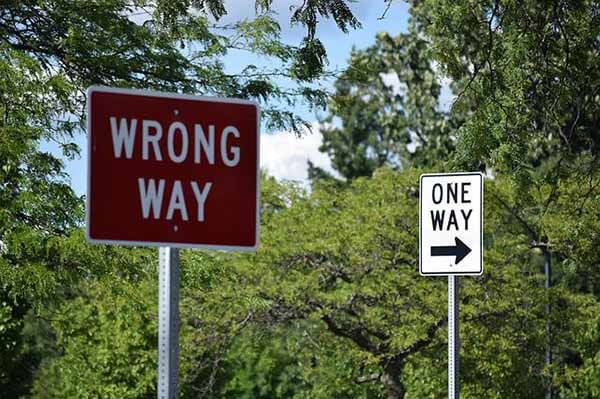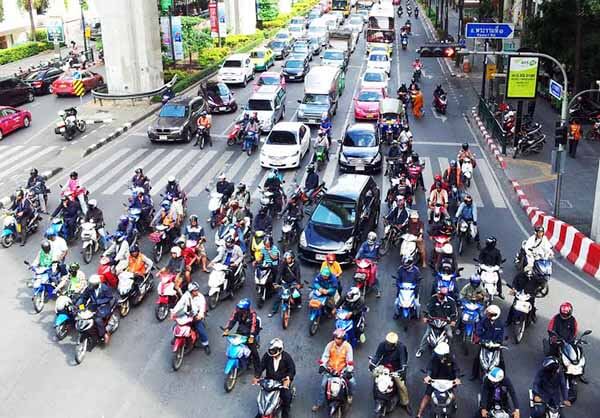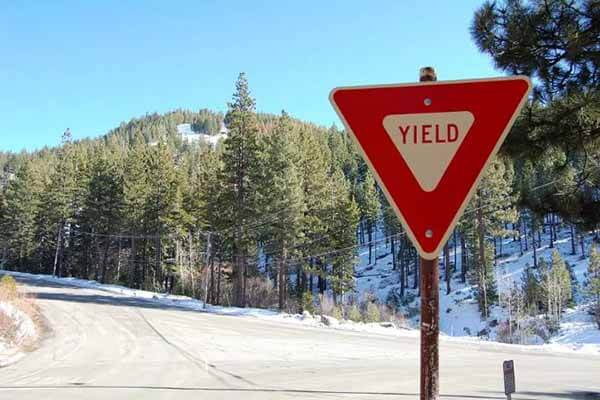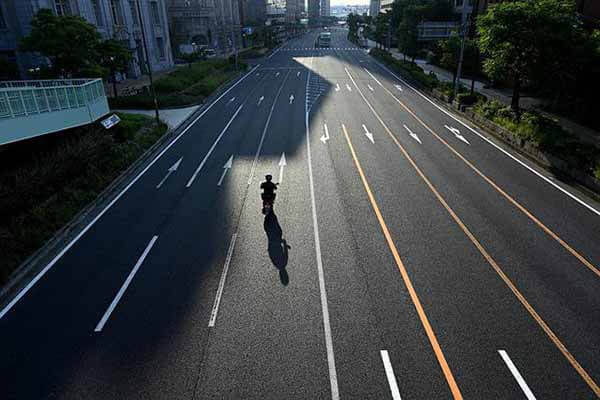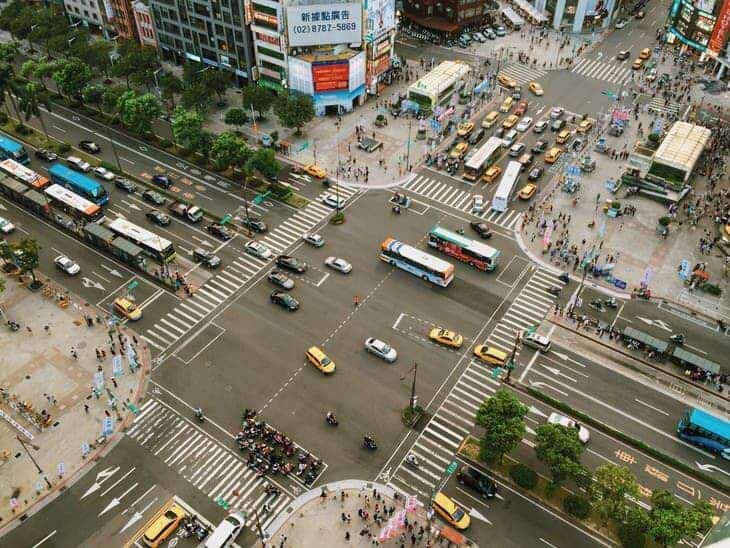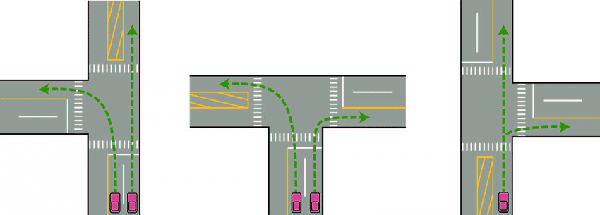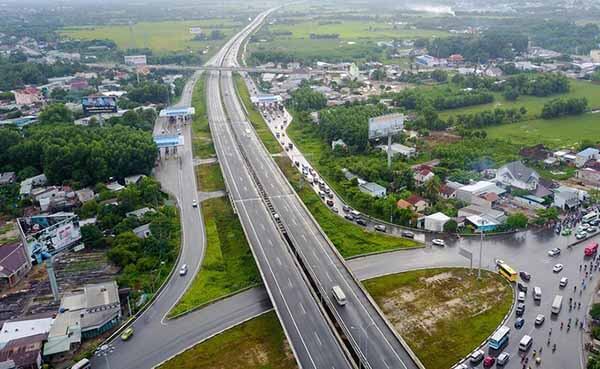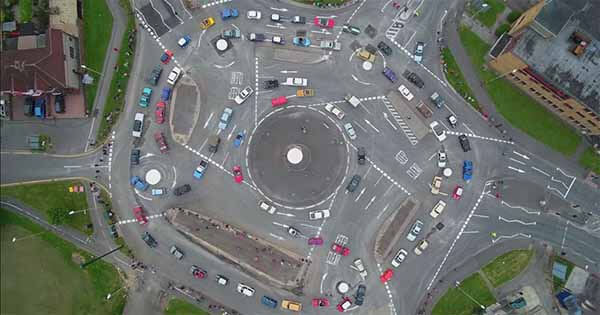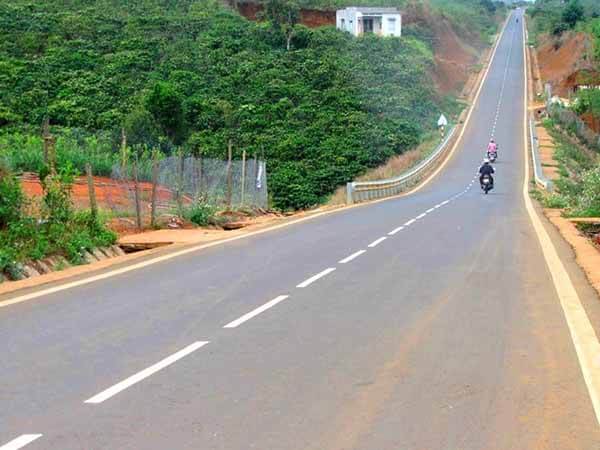The rules relating to the right of way determine who has to give way and who has right of way on the road. If you’ve got a car or motorcycle license then you must have learned them to pass. But like all things memories fade and it never hurts to brush up on the basics. So, here is a quick refresher on the right of way rules.
Right-of-way rules help to ensure the free flow of traffic. It’s the concept that governs how vehicles move on the roads and who yields in different scenarios. The right of way rules helps ensure that those using the road act consistently. Whether you’re driving a car or riding a motorcycle, the right of way rules applies to you.
The Right of Way Rules
1. General Rule: Yield to the Right
Generally, a car or motorcycle yields to the right. If you’re turning left across the path of the oncoming traffic you would yield. If you’re turning left and the oncoming car is turning right, again you would yield. The exception would be if you had a green arrow, which gives you the right of way over both the oncoming car and the motorcycle turning left.
2. Riding Straight
When you’re riding straight along a road with no lights, intersections, or crosswalks, you typically have right of way over vehicles looking to join the road. The exceptions to this rule are in the case of pedestrians, school buses, and emergency vehicles.
You may also like: 12 Motorcycle Safety Tips Every Rider Should Know
3. Uncontrolled Intersections
An uncontrolled intersection is one with no lights, stop signs, or yield signs. When you are approaching an uncontrolled intersection, do so with extreme caution. The safest way to approach this type of intersection is to come to a complete stop before proceeding through it. If there is another vehicle also approaching or waiting at the intersection, the general rule is that the vehicle that gets to the intersection first is that which has right of way.
4. T – Intersections
At a T – intersection, the vehicle turning yields to the straight-moving vehicles. The normal right of way rules doesn’t apply, as the vehicle turning onto the main road will always yield to the vehicles that are on the road, even if they are turning off the road.
5. Four-Way Stop
Four-way stops cause many riders a mental block, but taking your time before proceeding through the intersection will usually stop any major issues. The general rule when you approach a four-way stop is first in first served. What this means is the motorcycle that arrives at the intersection first generally rides through the intersection first, with the other riders proceeding based on the order in which they arrived at the intersection. Riders would also yield to pedestrians.
What happens if you’re not sure who arrived at the intersection first. In these instances, proceed with caution. It takes two seconds to let someone else go before you (even if technically you have right of way) but it takes a whole lot longer, as well as causes a heap more stress if you hit something and have to deal with the consequences.
What happens then if you arrive at the same time as another motorcycle. If you arrive at the four days stop at the exactly the same time, then the regular right of way rules apply, so the vehicles that are oncoming have right of way, then those making a turn right, and finally those turning left that have to pull across the path of ongoing traffic to make the turn.
6. Highways
On a highway when vehicles are entering the highway, there is an expectation that all riders and drivers will be courteous and exercise good etiquette. The legal position is that those entering the highway will yield to those already on the highway. Where there is no provision for merging, it seems logical that those entering the highway should merge. The vehicles that are on the highway have right of way, so when merging you should yield to these vehicles.
You may also like: Can You Take A 250cc Motorcycle on The Highway?
7. Roundabouts
While those from the United Kingdom, Australia, and New Zealand, have been dealing with roundabouts for years, they have only recently begun gaining in popularity in North America. As a general rule, you yield to the traffic that has already entered the intersection or roundabout, which is just an extension of the yield to your right rule.
As those entering the roundabout yield to those in the roundabout, it’s pretty important to use your turn signals when you’re in the roundabout so that those waiting to enter know what you are up to. Many a strong word or gesture has been aimed at those who fail to signal properly in a roundabout.
As an aside, the exception to this rule is the roundabout, at which the Arc de Triomphe sits in the center of, Paris, France. Ah, the French. At the Arc de Triumphe, all traffic within the multilane roundabout yields to that which is entering. If you ever find yourself at a loose end for a couple of hours in Paris, standing at the top of the monument and looking down at the chaos that ensues is a great way to spend an hour or two.
8. One Lane Backroads
This is another instance where some good old-fashioned common sense and courtesy should prevail above all else. The exception is when you are going downhill and another vehicle is coming uphill. In this instance, it’s generally accepted that the vehicle going downhill yields to the one coming uphill.
9. Look Out for Local Rules
These rules hold true for most of North America, but as with most things there are always going to be local idiosyncrasies or minor variations between jurisdictions, if you’re riding outside of your home state, it always pays to check the rules for the state your visiting. This ensures that you always have the law on your side.
Every now and then there might be a situation where you are just not sure, may some weird new road layout or similar. In these instances, always err on the side of caution. Remember it takes two seconds to yield to someone, even if they are in the wrong. It takes a whole lot longer and usually involves a lot more pain if you end up in an accident.
|
Michaels Summary & Conclusion This is what I mean by “Look out for Local Rules” (or lack of any rules) Everything that is written in the article above about the right way of rules for the road is the proper and legal way to ride your motorcycle. however, as with most things in life proper and legal may not always match with actual and realistic so I will briefly comment on my own personal writing experiences both in the United States and in foreign countries. General rule: yield to the right Yielding traffic on the right is technically the proper way to do it. However, the best survival technique is to always yield to any vehicle that is larger or that is likely not to yield to you! Words have meaning and in general or generally mean not always! as a motorcyclist, I always assume that other vehicles may not see and always leave a way out and never pull directly in front of anyone even another motorcycle. Uncontrolled intersections In many countries around the world especially developing countries if you follow the normal instructions for uncontrolled intersections and come to a complete stop you’re very likely to get run into from behind. So despite what the general consensus is for the rules of the road always pay attention to the local customs and culture of the country you are in. approaching an uncontrolled intersection in Southeast Asia, especially in countries like Vietnam, Cambodia, in Thailand is a whole different experience than in a western country. The right of way rules of the road our ideals that armor strictly followed in more developed countries so be aware of the environment you are in. it could actually be safer to adapt your style and ride as the local people are doing than to ride like you would in your own country. this is something you will only learn from experience and practice. Four-way stop Going through a four-way stop or an intersection with traffic lights would be a major offense in most developed countries that would at least be a high fine and could lead to a suspended license. But in many countries around the world stop, signs and traffic lights are more like guidelines or even suggestions so keep that in mind. In most cases, I don’t feel comfortable riding through stop signs or red lights but what I do is watch in my rearview mirrors very closely and stay to the curbside of the road so if any vehicle from behind does not stop I won’t be hit from the rear in my personal experience being rear-ended is one of the most likely ways to get seriously hurt or killed on a motorcycle while riding in many countries. Roundabouts When I first started riding in Vietnam the thought of entering a large roundabout or traffic circle was terrifying. But with a little practice and learning to go with the flow and ride like the local people do it became one of the greatest riding experiences in my life! When it comes to roundabouts and traffic circles in places like Southeast Asia all the western rules go out the window and you need to just ride like everyone else. The best recommendation I can make is don’t make any quick or sudden moves smooth and fluid-like riding in the rain. by not making any quick and unpredictable moves you will greatly lessen your chance of having a bad experience. Look at the Video Below from Bangkok, this is normal riding there. |
FM/L

